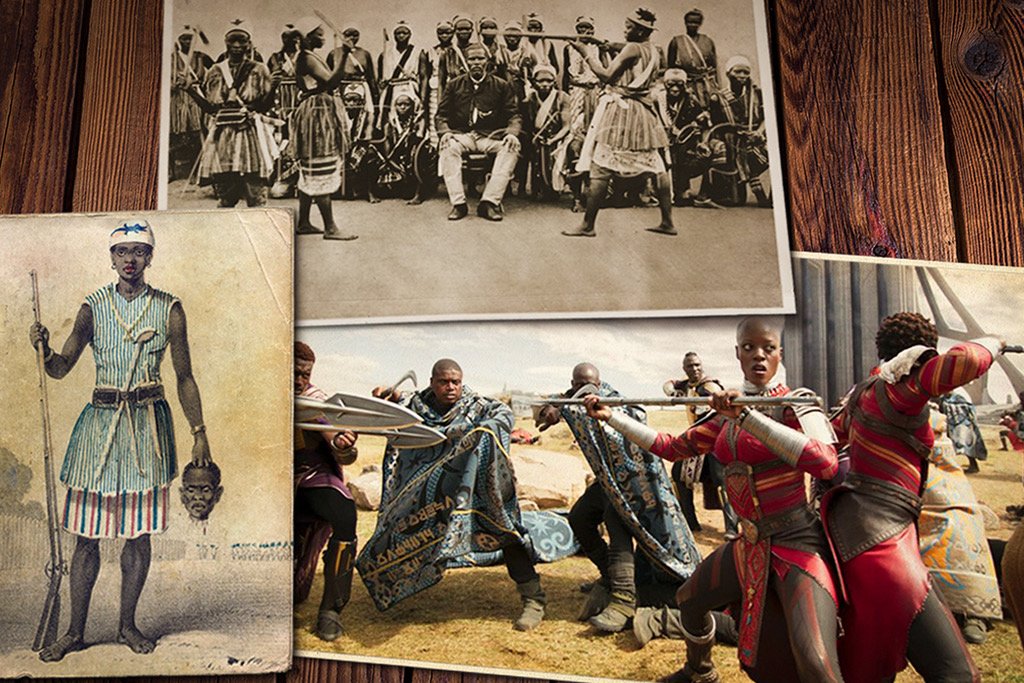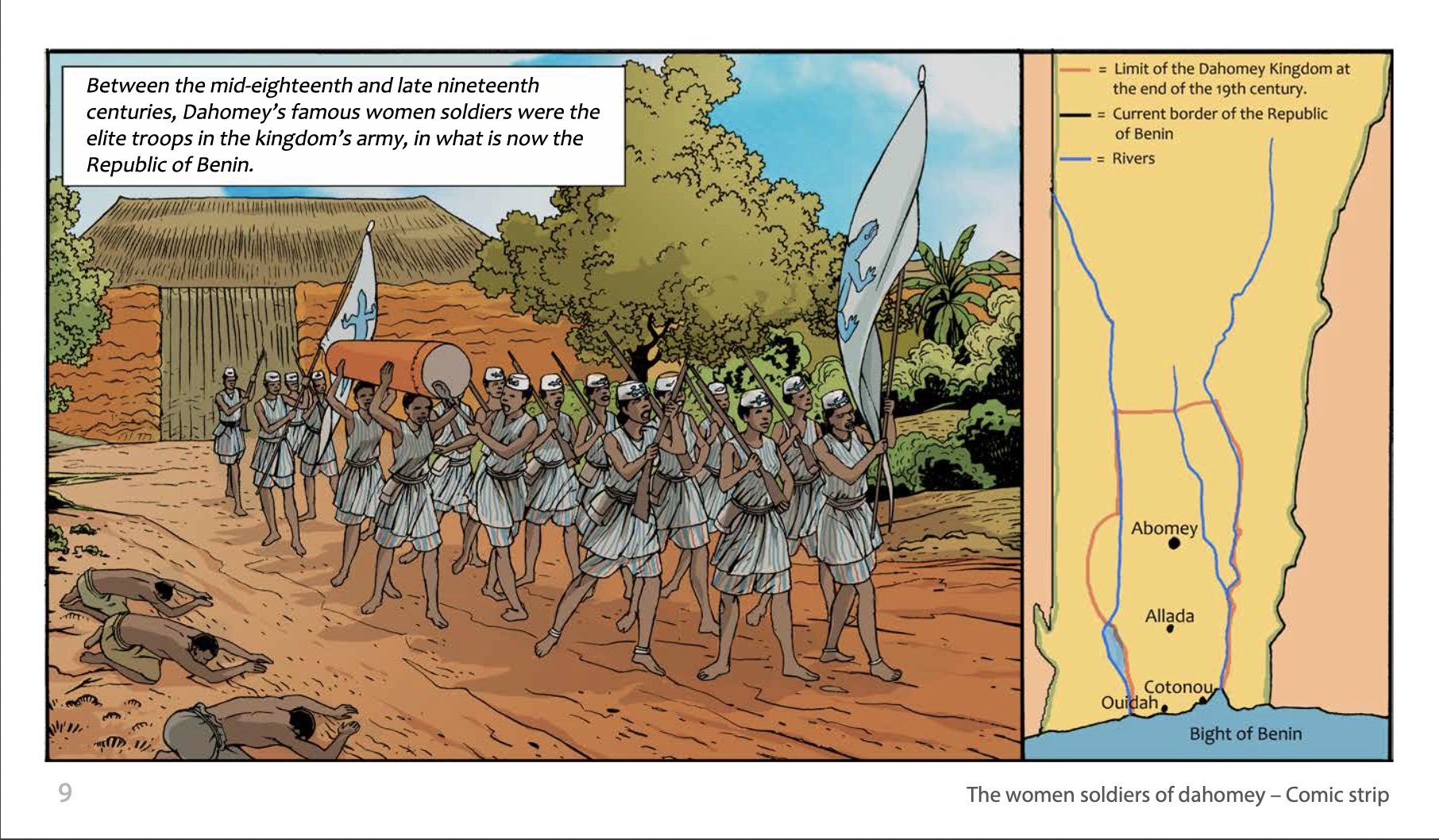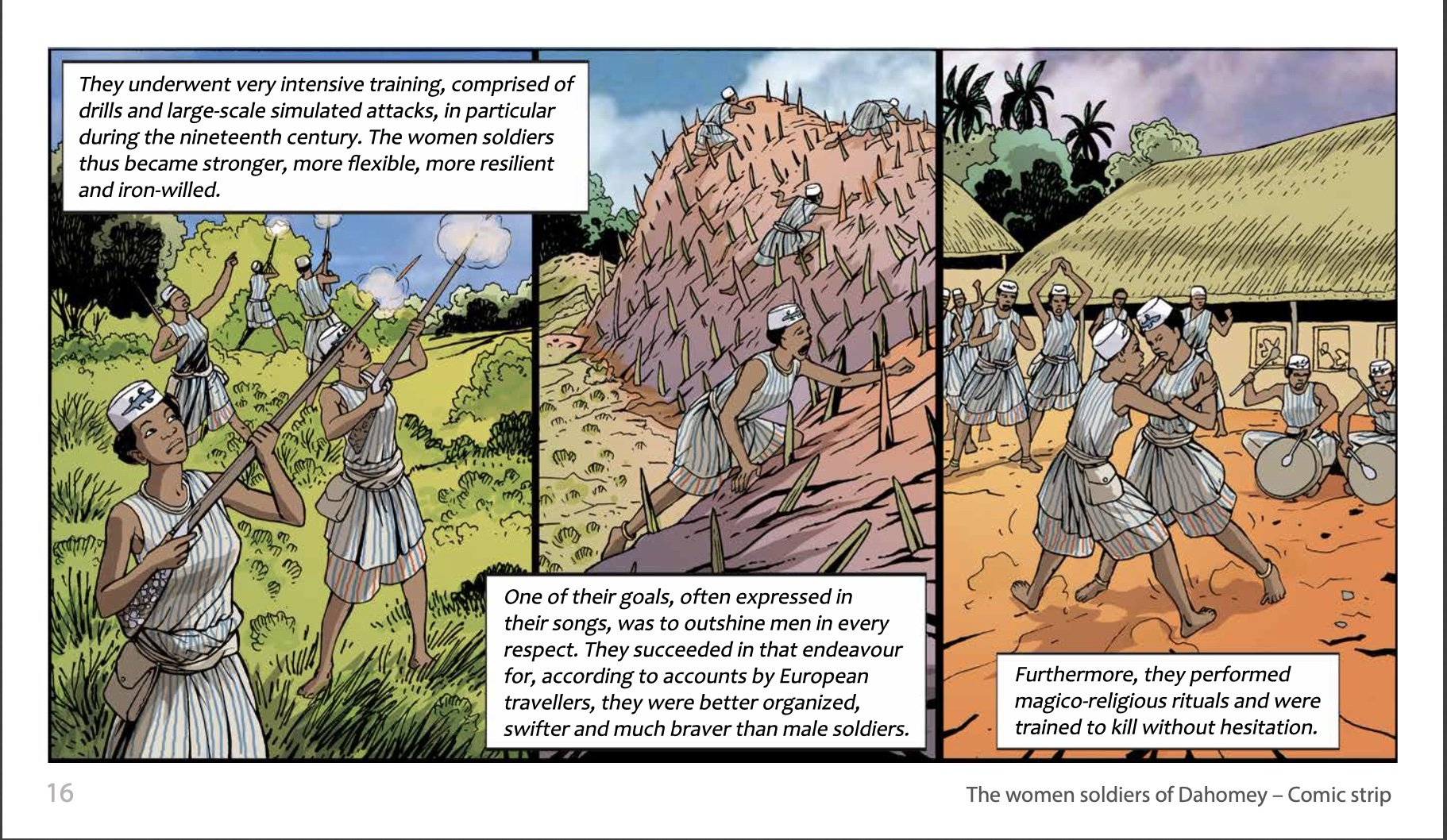The Dahomey Amazons: Fearless Female Warriors Who Inspired the Dora Milaje in the Movie ‘Black Panther’

In 2018, Chadwick Boseman and Lupita Nyong’o starred in the popular Marvel superhero movie Black Panther. The film introduced viewers to an elite all-female guard known as the Dora Milaje. Sworn to protect the King of Wakanda in the fictional kingdom located in Africa, the Dora Milaje surprised audiences to the point of questioning whether such an elite force could have existed in the past. A year after the movie’s release, Nyong’o traveled to the Republic of Benin to uncover the real story behind the inspiration for the Dora Milaje.
What she found was an uncanny connection to a fearless and elite palace guard of Agoji women from the Kingdom of Dahomey who were known as the Dahomey Amazons — a name popularized by Western colonists in homage to the warrior women of Greek mythology. Since the Kingdom of Dahomey was one of the richest in West Africa, it drew merchants, slave traders, missionaries, and colonists to leave the Western world to travel across oceans and continents to reach it. In order to protect its wealth and prosperity, the Kingdom of Dahomey had developed this militaristic society dubbed a “Black Sparta” by renowned British explorer Richard F. Burton. The Dahomey Amazons gained notoriety between the mid-18th and late 19th centuries.

“In Dahomey the Amazons are not a fable,” wrote Royal Navy ship commander and author Frederick E. Forbes, as published in The Observer in 1851. “There are some 5,000 female soldiers out of 12,000 troops of which the Dahoman standing army consists. These women are enregimented, and drilled in the same manner as the men; and it must be added they are equally dexterous in the use of arms, equally fearless in the field, and, if possible, still more ferocious.”
Forbes wasn’t the only one to record his findings and share it with the rest of the world. Italian missionary Francesco Borghero described an army exercise he witnessed in 1861, recalling thousands of Dahomey Amazons had scaled a 120-meter-high thorny acacia bush while barefoot. Despite the cuts and open wounds on their exposed skin, they didn’t stop. The Dahomey Amazons were tough, but they were also brutal, too.
Jean-Marie Bayol, a French colonial ambassador, arrived at the Royal Palaces of Abomey in December 1889. He was sent on a diplomatic mission to secure a deal for the Kingdom of Dahomey’s rich natural resources. While he was there he observed the kingdom’s army and its all-female warrior class — and witnessed the initiation of a teenage recruit named Nanisca, who was brought in front of everyone to face a bound prisoner.
“[She] walked jauntily up to, swung her sword three times with both hands, then calmly cut the last flesh that attached the head to the trunk… She then squeezed the blood off her weapon and swallowed it.”
The execution-style killing was Nanisca’s first but wouldn’t be her last. Bayol discovered this was part of the Kingdom of Dahomey’s “insensitivity training” where new recruits were exposed to or participated in violent deaths. In one typical ceremony, bound prisoners were thrown in baskets over a ledge into a mob 16 feet below.
The Dahomey Amazons were selected every three years, and new recruits aged between 12 and 15 years old were forced to abandon any previous family alliances. They had to swear allegiance to the king, take an oath of celibacy, and begin training with weapons they’d use in combat. Their training included wrestling, target practice, and large-scale simulated attacks. Then these warriors were broken down into smaller units to train in a specialty. In the native Fon language, these units were called gbeto (huntresses of big game and elephants), the gulohento (riflewomen), gohento (archers with bows and arrows), nyekplohento (reapers with blades and edged weapons), and agbarya (gunners of artillery).

In addition to their roles as the king’s bodyguards, they also participated in the profitable Atlantic slave trade and attacked neighboring villages.
“These expeditions are, strictly speaking, not wars, but slave hunts; the king pays his troops a fixed sum for each slave, which forms their only remuneration from the royal treasury; consequently a state of peace is obnoxious to the army, because it is unprofitable,” Forbes wrote. “In these terrible ‘hunts’ the Amazons signalise themselves in the most daring as well as sanguinary manner. They make no prisoners of the aged or the very young, but slay them without mercy. The King of Dahomey sells the slaves thus purchased from his troops to the slave dealers; and therefore he is the slave monopolist of his kingdom. What a blessing it would be to human nature if the power of this ruffian was destroyed, his kingdom disintegrated, his resources ruined, and his people rendered politically free.”
Forbes’ calls to have the king ousted and the Kingdom of Dahomey squashed were answered some 40 years later through the Franco-Dahomean Wars, the first in 1890 and the second between 1892 and 1894. The Dahomey Amazons fought valiantly using hand-held bladed weapons and Dutch rifles — but were nearly annihilated by the French military’s superior weaponry. The French had machine guns, modern breech-loading artillery, and 75 mm cannons, which was too much for King Behanzin’s force. He surrendered in defeat on Jan. 25, 1894.
Read Next:

Matt Fratus is a history staff writer for Coffee or Die. He prides himself on uncovering the most fascinating tales of history by sharing them through any means of engaging storytelling. He writes for his micro-blog @LateNightHistory on Instagram, where he shares the story behind the image. He is also the host of the Late Night History podcast. When not writing about history, Matt enjoys volunteering for One More Wave and rooting for Boston sports teams.
BRCC and Bad Moon Print Press team up for an exclusive, limited-edition T-shirt design!
BRCC partners with Team Room Design for an exclusive T-shirt release!
Thirty Seconds Out has partnered with BRCC for an exclusive shirt design invoking the God of Winter.
Lucas O'Hara of Grizzly Forge has teamed up with BRCC for a badass, exclusive Shirt Club T-shirt design featuring his most popular knife and tiomahawk.
Coffee or Die sits down with one of the graphic designers behind Black Rifle Coffee's signature look and vibe.
Biden will award the Medal of Honor to a Vietnam War Army helicopter pilot who risked his life to save a reconnaissance team from almost certain death.
Ever wonder how much Jack Mandaville would f*ck sh*t up if he went back in time? The American Revolution didn't even see him coming.
A nearly 200-year-old West Point time capsule that at first appeared to yield little more than dust contains hidden treasure, the US Military Academy said.












